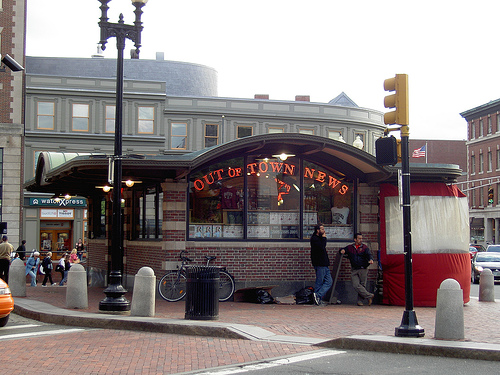


Time to take a break from big-picture policy issues facing people with disabilities and look at some of the ways these individuals are making life matter through employment in their communities.
Let’s start with a hearty congratulations to Wood County, Ohio, which last month was recognized by the state for having the highest employment rate among its population of people with disabilities. Jennifer Freehan of the Toledo Blade writes that the recognition is part of a program to encourage communities to see the value of the Employment First Initiative ordered by Governor John Kasich back in March.
Wood County’s 40% employment rate for people with disabilities soars over the state average of 15%, and this figure does not count the 350 individuals who are in contract services and community-based employment programs through the Wood Lane organization. Freehan accompanied Ohio Department of Disabilities director, John Martin, on a visit to Wood Lane to witness some of its success stories firsthand, writing:
Mr. Martin and his staff spent time with Andrew Bullerjahn, a 24-year-old autistic man who has been employed full-time for five years in the Wood County Records Center, scanning documents and transferring the digital images to microfilm. His mother, Ann Bullerjahn, said her son is smart but has communication challenges. ‘He feels comforted by routine, but he pays a lot of attention to detail,’ she said. ‘This is just a fabulous job. It’s perfect.’
On Labor Day, Tim Johnson of The Daily Nonpareil filed this story about ONI, an organization in Omaha, Nebraska, helping people with visual impairments, among other disabilities, with work opportunities. Program facilitator Doug Wampler tells Johnson that “Everything is achievable, if we can get the technology to do them.” While a lot of the work involves sorting and packing items for shipping, Wampler also lists a number of other tasks these individuals perform with the help of methods both new and old:
… [A]n associate can enlarge type on the computer screen, activate a voiceover that tells them what is on the screen or take photographs of documents and show them on the screen… For example, screen-magnifying software allows associate Katie Larson, who works in accounts receivable, to see both her paperwork and computer data on a split screen. And, of course, some use Braille to carry out their jobs.
Closer to home in West Hartford, Connecticut, a new pizza shop is providing individuals with disabilities with on-the-job training in the operation of a food service business. The Hartford Courant published this article submitted by reader Llyn Kaimowitz, which recounts how Ellie and Michael Routberg approached local caterer Yosi Awad to help start Taste of Life in an effort to provide work skills to people like their son. Ellie sums up the win-win values of the programs that provide career training and job opportunities for people with disabilities perfectly, telling Kaimowitz:
Everyone can benefit from these types of need-directed efforts. They offer satisfaction, creativity, learning, and challenges of all types. Being involved empowers individuals, and this is a very important aspect of who we are.
Comments?
Image by Dan4th Nicholas.